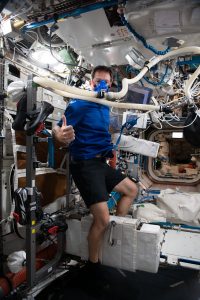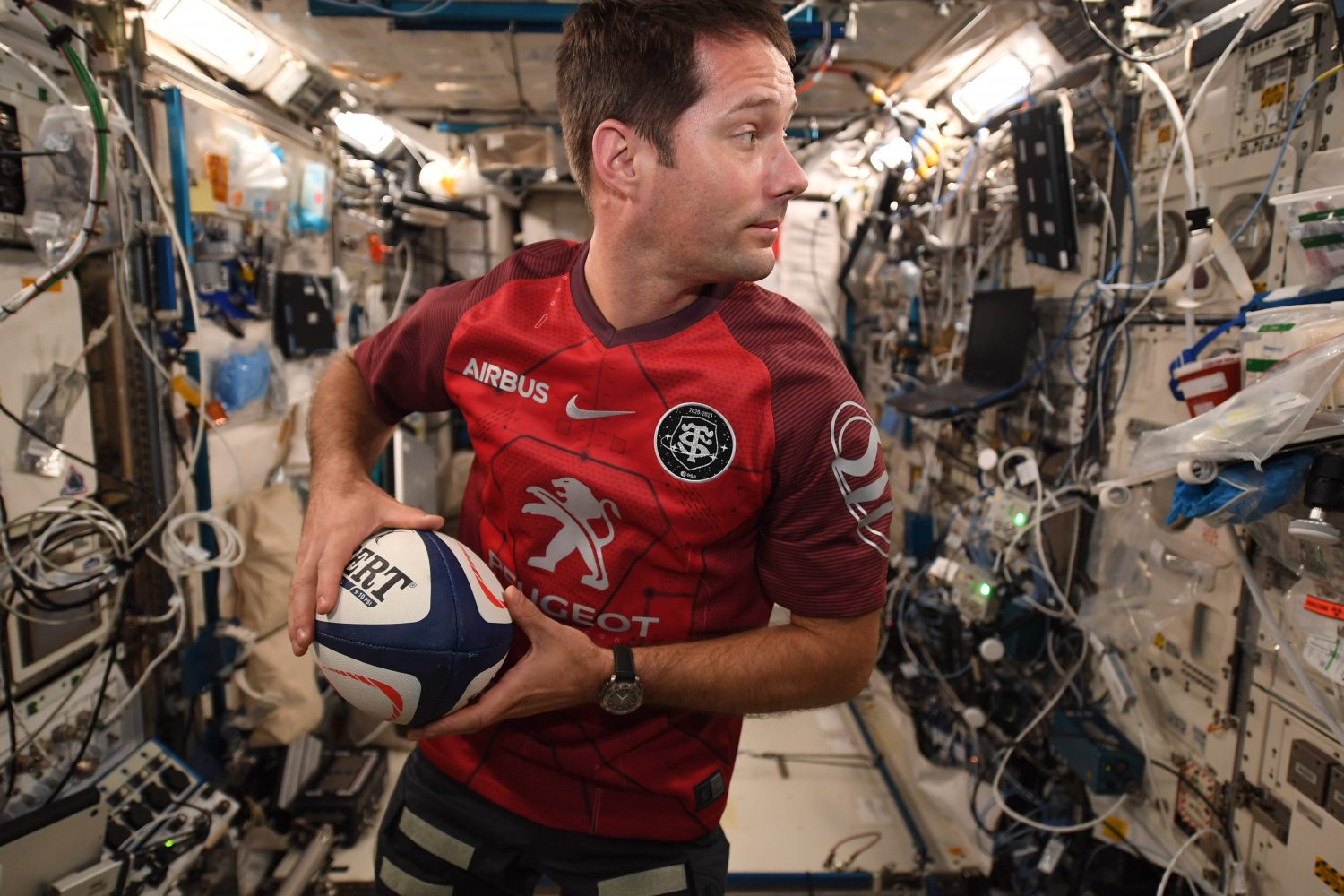The life of a professional athlete shows many similarities to one of an astronaut. Both need to perform at key moments, and train hard to be at their best.

Crew-2 flexing their muscles on the International Space Staiton. Credits: ESA/NASA
Once an astronaut is in space the body needs to adapt and react to a sudden change of over millions of years of evolution – all life on Earth copes with gravity’s pull, but in weightlessness that pull is gone. Spaceflight researchers call it “body-loading”, and in weightlessness there is no physical load pushing on you. Nothing has weight and even an astronaut’s head is not supported by their neck the same way as on Earth.
One worrying finding is that in weightlessness muscles and bone mass tend to waste away – up to 1% a month without care taken to. Some researchers say astronauts in space experience a form of accelerated ageing.
As on Earth exercise and a healthy diet is the first thing in the quest to stay fit and astronauts, like professional athletes, have a team of medical professionals to monitor their health, progress and help them keep fit, but in spaceflight jargon they are called bio-medical engineers and flight surgeons.
Before spaceflight, a dedicated coach ensures ESA astronauts are in top form, like preparing for a marathon they build up the work to be ready for launch.

Thomas Pesquet using the Space Station’s CEVIS exercise bike and monitoring his VO2 max. Credits: ESA/NASA–T. Pesquet
Once in space, astronauts exercise two hours each day, every day. There are three types of exercise machines available, a treadmill where the astronaut is strapped down with elastics to be able to run, an exercise bicycle (called CEVIS) that has no handlebars, and a weightlifting machine that uses valves to recreate the resistance weights would on Earth. Their efforts are monitored by teams on Earth to ensure they stay fit and at optimum health.
The excessive training schedule is needed to counteract the natural muscle and bone loss when in space. If you don’t use them, you lose them, and in space muscles and bones are used much less as astronauts float from module to module. Bedridden patients on Earth also lose muscle mass quickly: a week not moving a muscle due to broken bone generally takes a month to recuperate – a guideline used by doctors.
Exercise should be fun, but let’s face, it can be a drag, France’s space agency CNES has sent up a virtual reality headset for ESA astronaut Thomas Pesquet to test while on his Mission Alpha aboard the International Space Station. The Immersive Exercise technology demonstration will show routes on Earth that Thomas can view as he rides the Station’s exercise bicycle – on the International Space Station not too far from home, this can be a nice bonus, but travelling to the Moon and Mars for 18 months away from friends and family this distraction from the daily exercise routine could be vital.
Exercise is only one part of the story of course. Good food is paramount to keeping the energy levels up. In space the diet on board has little sugar and little salt – this helps to reduce the loss of bone mass but is also generally good advice. Food tastes less good in space, but keeping a healthy diet is a priority so care is taken to ensure astronauts eat well, logging their intake like Tour de France cyclists. During a launch into space or when on a spacewalk, astronauts need to work and concentrate for over six hours with nothing but water to drink, not ideal, but before a sortie into space they load with food like athletes do before a marathon or before a game.
Back on Earth astronauts are monitored intensively to get them back to their original shape before the launch. Baseline Data Collection is done before launch and compared with data during their flight as well as afterwards. Private medical conferences are held at regular moments to discuss issues and analyse the data returned from exercise sessions.
ESA astronaut Thomas Pesquet has often said that sport taught him the values of team spirit and respecting team mates, and no astronaut is an island – if one profession is an example of teamwork it is being an astronaut. It takes a team to ensure they are at their best. Astronauts are confined to small spaces and need to trust their colleagues and team with their life so there is no room for individualism. Thomas is set to be commander of the International Space Station during the last part of his Mission Alpha. Similar to being a captain of a team, a commander’s role leads the team in collaboration with the managers on Earth, to ensure the goals are achieved.
Thomas talked to French national football player Kylian Mbappé about football, science and all things intergalactic ahead of UEFA EURO 2020:



